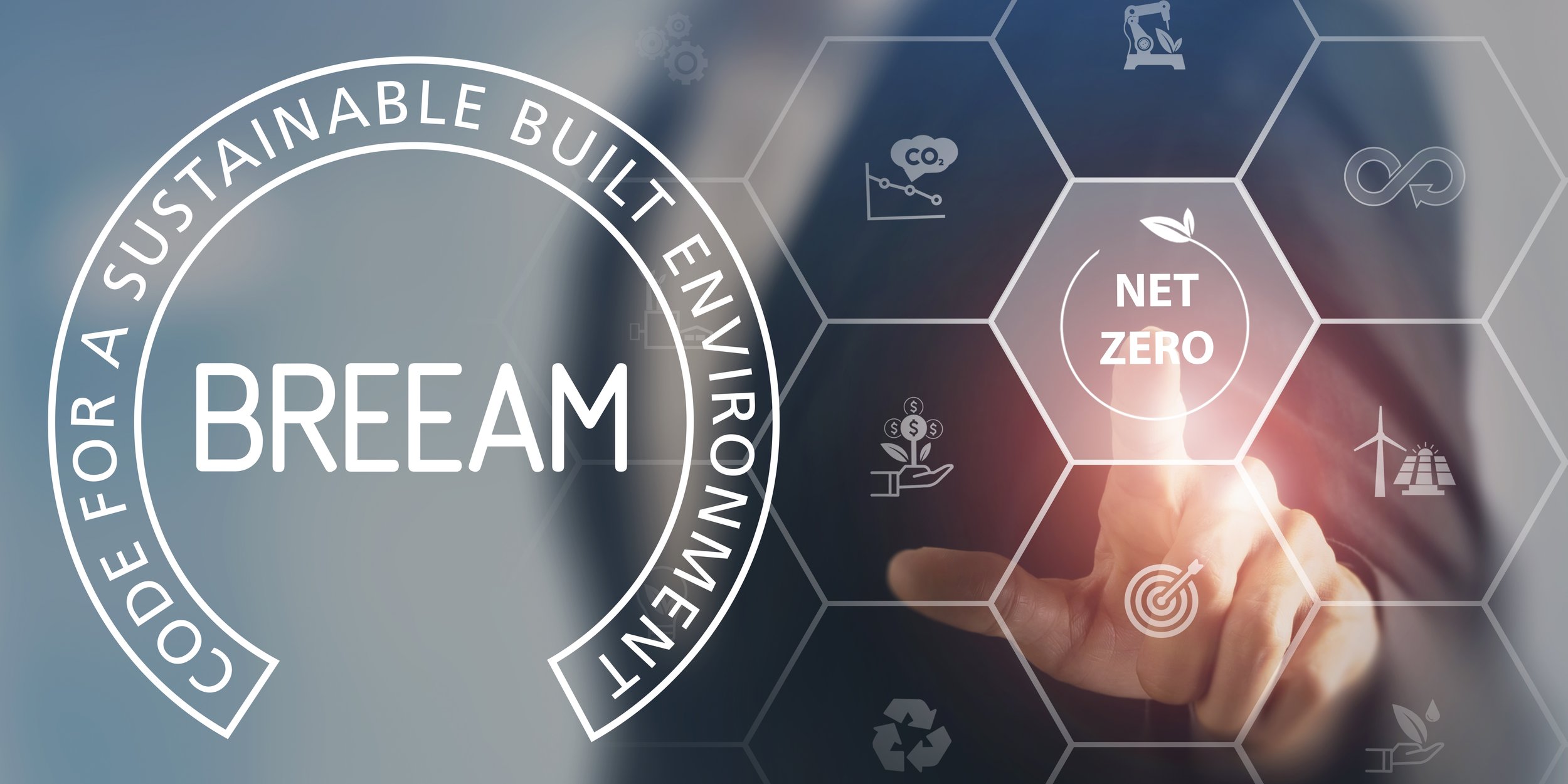Embedding Sustainability into the Planning System: A Strategic Approach
Sustainability is a key focus in UK planning, with policies requiring energy efficiency, carbon reduction, and circular economy strategies in new developments. This article looks at why sustainability is now central to UK planning policy.
Sustainability is now central to UK planning policy
Sustainability is no longer an afterthought in the planning process; it is a fundamental requirement embedded in policy and regulatory frameworks. Local planning authorities across the UK have integrated sustainability benchmarks into their planning guidelines, often referencing the London Plan as a model for best practices.
New-build homes are now required to produce at least 31% less carbon emissions than previous standards, reflecting a significant stride towards energy efficiency.
The London Plan (image Source: www.urbanistarchitecture.co.uk/new-london-plan-2021/)
London’s Sustainability Framework
London’s planning policies set ambitious sustainability targets, particularly in energy efficiency and carbon reduction. The London Plan requires:
A minimum percentage of energy consumption to be sourced from renewable energy (e.g., solar PV, heat pumps).
A demonstrable improvement over Building Regulations in terms of energy efficiency.
Whole Life Carbon Assessments for referable developments, aligning with the Greater London Authority’s (GLA) reporting framework.
Circular Economy Statements to ensure sustainable material use and waste reduction.
Other local authorities across the UK have adopted similar measures, often mandating at least BREEAM “Very Good” or “Excellent” ratings, alongside Sustainability Statements. Embodied carbon considerations are increasingly standard, reflecting a shift toward a more holistic approach to sustainability.
Circular Economy in Planning
The Circular Economy promotes resource efficiency, waste reduction, and sustainable material usage, thereby extending the life cycle of construction materials. It enhances project design by integrating:
Material reuse and adaptability.
A reduction in embodied carbon through responsible sourcing.
Alignment with Whole Life Carbon and energy efficiency strategies.
BREEAM: Driving Sustainability Excellence
BREEAM (Building Research Establishment Environmental Assessment Method) is a widely recognised certification for sustainability in the built environment. Its advantages include:
A structured framework for assessing sustainability across nine categories.
Enhanced project value through verified environmental performance.
Compliance with planning and funding requirements, making projects more attractive to investors.
Whole Life Carbon Assessment
Whole Life Carbon Assessments (WLCAs) provide a comprehensive evaluation of carbon emissions across a building’s lifespan. These assessments:
Identify carbon reduction opportunities from design to demolition.
Support compliance with the London Plan and similar local policies.
Differentiate between upfront embodied carbon and long-term operational carbon.
Life Cycle Cost Assessments
Life Cycle Cost Assessments (LCCAs) integrate financial planning with sustainability by evaluating:
The cost implications of sustainable material choices.
Long-term operational savings from energy-efficient designs.
Both capital expenditure (CapEx) and operational expenditure (OpEx) within the carbon assessment framework.
Climate Change Adaptation Assessments
With climate change impacting urban development, adaptation assessments are becoming a critical component of planning. These evaluations:
Assess potential climate risks to new developments.
Recommend mitigation strategies to enhance resilience.
Align with national and local climate policies.
Additional Considerations: Acoustics, Pre-Demolition Audits, and EIA
Acoustics - Ensuring buildings meet noise control requirements enhances occupant wellbeing.
Pre-Demolition Audits- Identifying opportunities for material reuse before demolition reduces waste and embodied carbon.
Environmental Impact Assessments (EIA)- A key requirement for major developments, ensuring environmental considerations are addressed early.
Planning Policy:
The Presumption in Favour of Sustainable Development
The National Planning Policy Framework (NPPF) reinforces the principle of sustainable development by requiring planning decisions to align with:
Development needs and infrastructure planning
Environmental enhancement and climate change mitigation
Sustainable transport and urban land use efficiency
The Evolution of Green Belt Policies
To meet the UK’s housing and commercial needs, Green Belt policies have been adapted:
Grey Belt land (low-value Green Belt land) can now be considered for development.
Local authorities must review Green Belt boundaries to accommodate unmet needs.
New policies require significant contributions to affordable housing and green infrastructure.
Case Studies: Sustainability in Action
The Langfield, Westminster – Gillingham House Scheme
Located at 38-44 Gillingham Street near Victoria Station, Gillingham House falls under Westminster City Council’s jurisdiction. Structural investigations revealed the South block’s poor condition, making its retention unfeasible. Instead, a redesign was proposed to demolish the South block while preserving much of the existing structure.
Reinforced piled foundations ensure stability, preventing structural movement. The façade features sustainable materials, including Stofix brick cladding, Reider cement sheets, and triple-glazed windows with timber frames. Internally, walls combine gypsum plasterboard, rockwool insulation, and reinforced concrete, while floors use a composite system with RMF Eco-raised access floors.
Sustainability is a key focus, with air-source heat pumps providing heating, cooling, and hot water, complemented by a mechanical ventilation system with heat recovery. A garden spans the southwest side to address the area's limited green space, enhancing biodiversity. Improved MEP systems, vertical transport, and end-of-journey facilities further enhance efficiency and usability.
The Godley Green Garden Village
Tameside Council was granted outline planning permission in November 2023 for Godley Green to unlock up to 2,150 new homes over the next 16 years. The ambitious but achievable plan is to create a new sustainable garden settlement of beauty and great design that sensitively evolves around our existing communities and landscape.
As urban development increasingly prioritizes sustainability and circular economy principles, the Godley Green Garden Village and Gillingham House projects stand as testaments to forward-thinking planning and design. Both projects demonstrate an unwavering commitment to minimizing environmental impact through innovative construction techniques and material choices.
Circular Economy in Gillingham House Development
Longevity & Adaptability
Gillingham House follows a layered design, ensuring easy maintenance and long-term adaptability. Structural elements, including foundations and steel frames, are built for a 60-year lifespan. Mechanical dry-fixing techniques allow efficient facade maintenance, while exposed office ceilings enable tenant-driven modifications. Materials passporting supports future reuse and recycling.
Reducing Material Use
While initial plans aimed to retain 60% of the structure, structural assessments required adjustments. Still, 30.44% of the building area and 36.98% of the volume were preserved. The redesign maximizes material efficiency by reusing foundations and steel framing while optimizing fire protection.
Low-Impact Materials
Sustainability guided material selection, with 72% of materials third-party verified. RMF Eco Range floors lower embodied carbon, reclaimed oak flooring reduces deforestation, and CARES-certified steel ensures sustainability. Stofix cladding panels, made from recyclable materials, enhance insulation and reduce emissions.
Minimising Waste
A pre-demolition audit set reuse targets of 20-30%. Future efforts focus on achieving 97% recycled content in reinforcement steel, increasing recycled structural steel by 15-20%, and using 20% GGBS replacement in concrete to cut carbon impact.
Energy & Carbon Reduction
A Whole Life Carbon Assessment (WLCA) shaped sustainability efforts, reducing emissions through material efficiency and circular economy strategies. Enhanced insulation and efficient MEP systems further lower operational carbon output.
Final Thoughts
Sustainability isn’t just a regulatory requirement- it’s a strategic advantage. Integrating sustainable practices from the start enhances environmental performance, streamlines compliance, and drives long-term financial value. By utilising Whole Life Carbon Assessments, Circular Economy strategies, and BREEAM certification, Mainer and its partners ensure that every project meets evolving sustainability standards while maximising efficiency and resilience.
In an era where sustainability defines success, forward-thinking development isn’t just about building, it’s about building better.
As sustainability becomes a core component of urban planning, UK planning policies are evolving to address the environmental challenges of today and tomorrow. From energy efficiency to carbon reduction, new regulations are setting ambitious targets for developers and builders. The integration of circular economy principles is also transforming construction practices, focusing on material reuse, waste reduction, and long-term sustainability.
In this article, we will discuss how the London Plan and other local frameworks are driving innovation in the built environment, with a strong emphasis on energy-efficient design, Whole Life Carbon Assessments, and BREEAM certification.
To discuss any UK planning policies on your next project, click here
Please click below for more information on Mainer’s Services:














